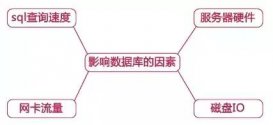正式開始之前,我們先來看下 mysql 服務(wù)器的配置和版本號信息,如下圖所示:
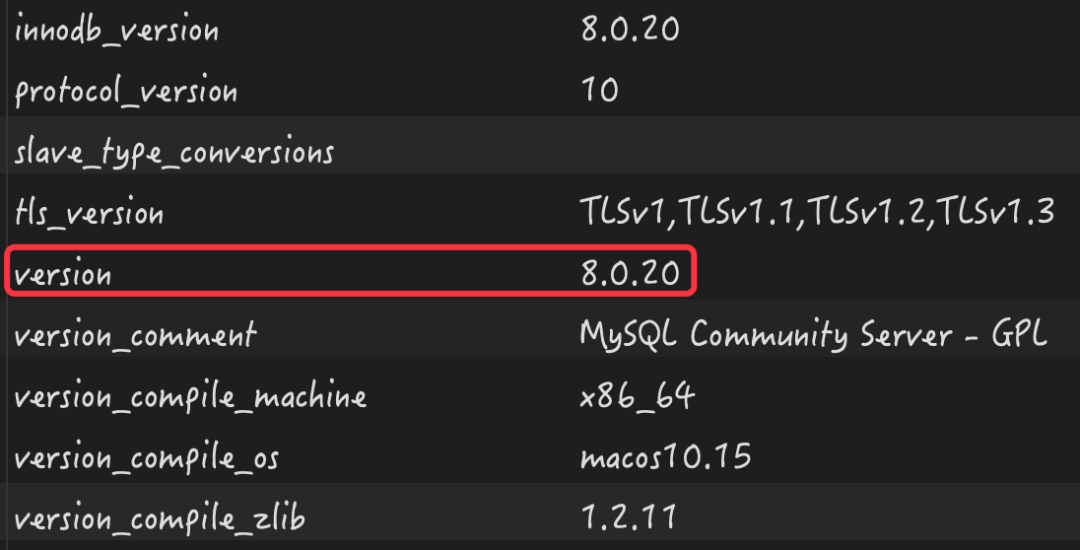
“兵馬未動糧草先行”,看完了相關(guān)的配置之后,我們先來創(chuàng)建一張測試表和一些測試數(shù)據(jù)。
|
1
2
3
4
5
6
7
8
9
10
11
12
13
14
15
16
17
18
19
20
21
22
23
24
|
-- 如果存在 person 表先刪除drop table if exists person; -- 創(chuàng)建 person 表,其中 username 字段可為空,并為其設(shè)置普通索引create table person ( id int primary key auto_increment, name varchar(20), mobile varchar(13), index(name)) engine='innodb'; -- person 表添加測試數(shù)據(jù)insert into person(name,mobile) values('java','13333333330'), ('mysql','13333333331'), ('redis','13333333332'), ('kafka','13333333333'), ('spring','13333333334'), ('mybatis','13333333335'), ('rabbitmq','13333333336'), ('golang','13333333337'), (null,'13333333338'), (null,'13333333339'); select * from person; |
構(gòu)建的測試數(shù)據(jù),如下圖所示:
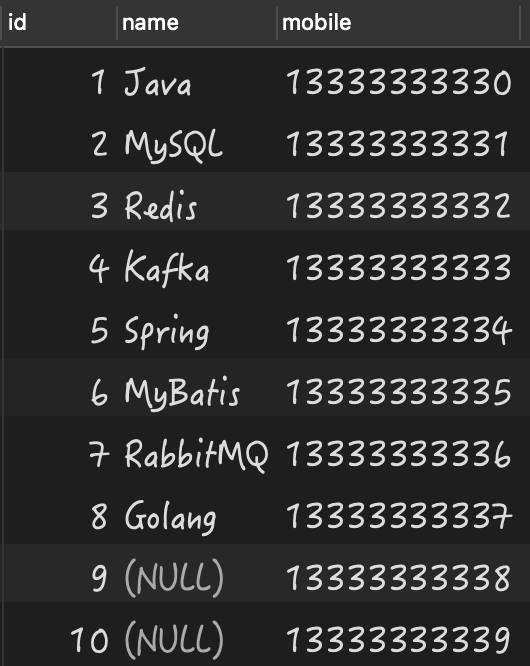
有了數(shù)據(jù)之后,我們就來看當(dāng)列中存在 null 值時,究竟會導(dǎo)致哪些問題?
1.count 數(shù)據(jù)丟失
當(dāng)某列存在 null 值時,再使用 count 查詢該列,就會出現(xiàn)數(shù)據(jù)“丟失”問題,如下 sql 所示:
|
1
|
select count(*),count(name) from person; |
查詢執(zhí)行結(jié)果如下:

從上述結(jié)果可以看出,當(dāng)使用的是 count(name) 查詢時,就丟失了兩條值為 null 的數(shù)據(jù)丟失。
解決方案
如果某列存在 null 值時,就是用 count(*) 進(jìn)行數(shù)據(jù)統(tǒng)計。
擴(kuò)展知識:不要使用 count(常量)
阿里巴巴《java開發(fā)手冊》強(qiáng)制規(guī)定:不要使用 count(列名) 或 count(常量) 來替代 count(),count() 是 sql92 定義的標(biāo)準(zhǔn)統(tǒng)計行數(shù)的語法,跟數(shù)據(jù)庫無關(guān),跟 null 和非 null 無關(guān)。
說明:count(*) 會統(tǒng)計值為 null 的行,而 count(列名) 不會統(tǒng)計此列為 null 值的行。
2.distinct 數(shù)據(jù)丟失
當(dāng)使用 count(distinct col1, col2) 查詢時,如果其中一列為 null,那么即使另一列有不同的值,那么查詢的結(jié)果也會將數(shù)據(jù)丟失,如下 sql 所示:
|
1
|
select count(distinct name,mobile) from person; |
查詢執(zhí)行結(jié)果如下:

數(shù)據(jù)庫的原始數(shù)據(jù)如下:
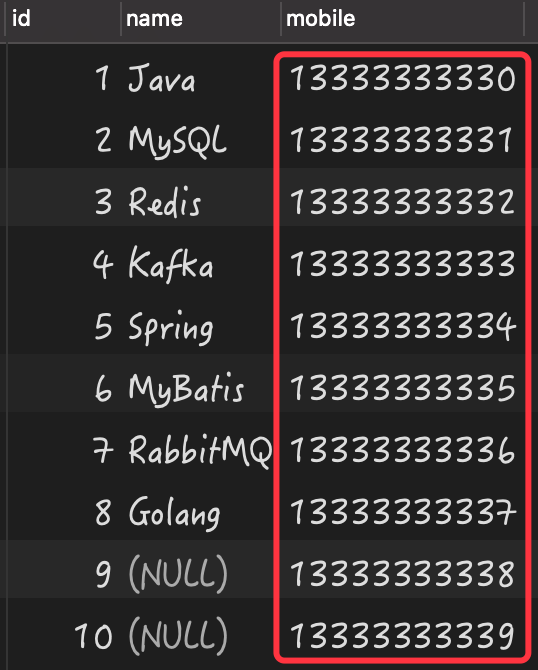
從上述結(jié)果可以看出手機(jī)號一列的 10 條數(shù)據(jù)都是不同的,但查詢的結(jié)果卻為 8。
3.select 數(shù)據(jù)丟失
如果某列存在 null 值時,如果執(zhí)行非等于查詢(<>/!=)會導(dǎo)致為 null 值的結(jié)果丟失。比如以下這個數(shù)據(jù):
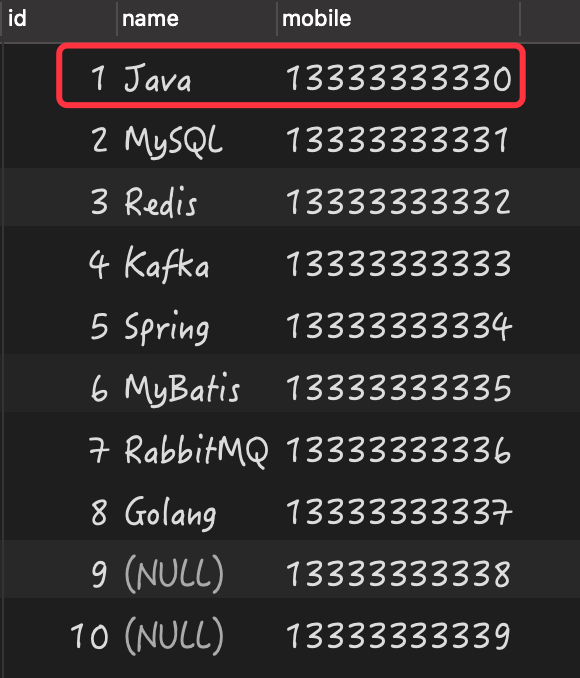
我需要查詢除 name 等于“java”以外的所有數(shù)據(jù),預(yù)期返回的結(jié)果是 id 從 2 到 10 的數(shù)據(jù),但當(dāng)執(zhí)行以下查詢時:
|
1
2
3
|
select * from person where name<>'java' order by id;-- 或select * from person where name!='java' order by id; |
查詢結(jié)果均為以下內(nèi)容:
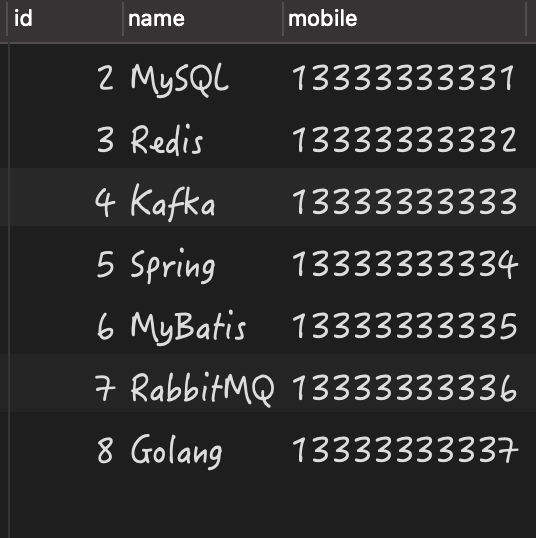
可以看出為 null 的兩條數(shù)據(jù)憑空消失了,這個結(jié)果并不符合我們的正常預(yù)期。
解決方案
要解決以上的問題,只需要在查詢結(jié)果中拼加上為 null 值的結(jié)果即可,執(zhí)行 sql 如下:
|
1
|
select * from person where name<>'java' or isnull(name) order by id; |
最終的執(zhí)行結(jié)果如下:
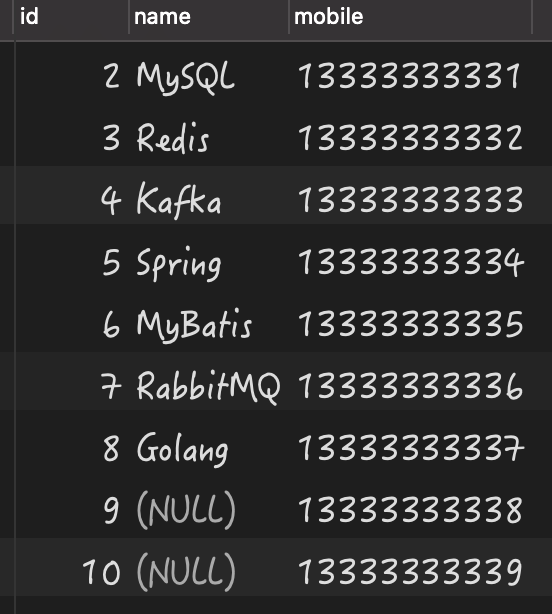
4.導(dǎo)致空指針異常
如果某列存在 null 值時,可能會導(dǎo)致 sum(column) 的返回結(jié)果為 null 而非 0,如果 sum 查詢的結(jié)果為 null 就可以能會導(dǎo)致程序執(zhí)行時空指針異常(npe),我們來演示一下這個問題。
首先,我們先構(gòu)建一張表和一些測試數(shù)據(jù):
|
1
2
3
4
5
6
7
8
9
10
11
12
13
|
-- 如果存在 goods 表先刪除drop table if exists goods; -- 創(chuàng)建 goods 表create table goods ( id int primary key auto_increment, num int) engine='innodb'; -- goods 表添加測試數(shù)據(jù)insert into goods(num) values(3),(6),(6),(null); select * from goods; |
表中原始數(shù)據(jù)如下:
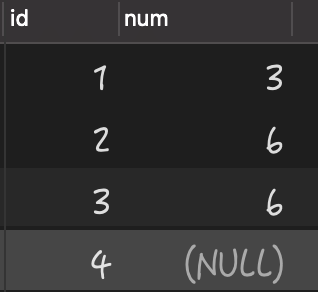
接下來我們使用 sum 查詢,執(zhí)行以下 sql:
|
1
|
select sum(num) from goods where id>4; |
查詢執(zhí)行結(jié)果如下:
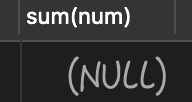 當(dāng)查詢的結(jié)果為
當(dāng)查詢的結(jié)果為 null 而非 0 時,就可以能導(dǎo)致空指針異常。
解決空指針異常
可以使用以下方式來避免空指針異常:
|
1
|
select ifnull(sum(num), 0) from goods where id>4; |
查詢執(zhí)行結(jié)果如下:

5.增加了查詢難度
當(dāng)某列值中有 null 值時,在進(jìn)行 null 值或者非 null 值的查詢難度就增加了。
所謂的查詢難度增加指的是當(dāng)進(jìn)行 null 值查詢時,必須使用 null 值匹配的查詢方法,比如 is null 或者 is not null 又或者是 ifnull(cloumn) 這樣的表達(dá)式進(jìn)行查詢,而傳統(tǒng)的 =、!=、<>... 等這些表達(dá)式就不能使用了,這就增加了查詢的難度,尤其是對小白程序員來說,接下來我們來演示一下這些問題。
還是以 person 表為例,它的原始數(shù)據(jù)如下:
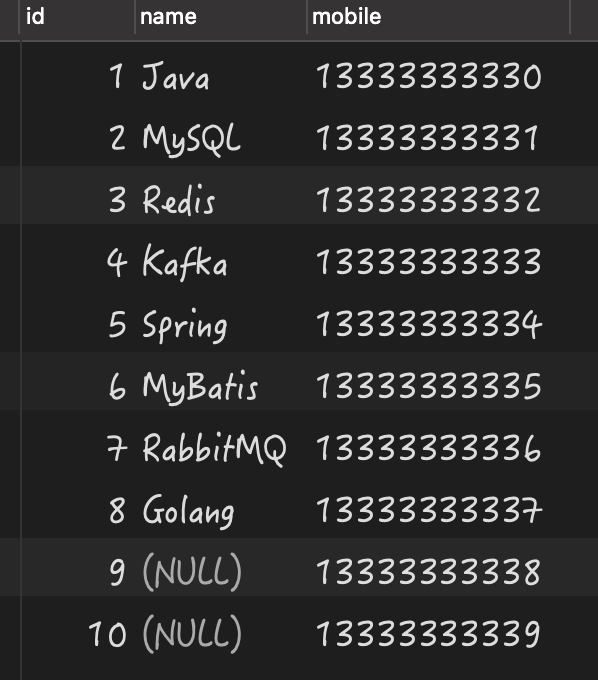
錯誤用法 1:
|
1
|
select * from person where name<>null; |
執(zhí)行結(jié)果為空,并沒有查詢到任何數(shù)據(jù),如下圖所示:

錯誤用法 2:
|
1
|
select * from person where name!=null; |
執(zhí)行結(jié)果也為空,沒有查詢到任何數(shù)據(jù),如下圖所示:

正確用法 1:
|
1
|
select * from person where name is not null; |
執(zhí)行結(jié)果如下:

正確用法 2:
|
1
|
select * from person where !isnull(name); |
執(zhí)行結(jié)果如下:

推薦用法
阿里巴巴《java開發(fā)手冊》推薦我們使用 isnull(cloumn) 來判斷 null 值,原因是在 sql 語句中,如果在 null 前換行,影響可讀性;而 isnull(column) 是一個整體,簡潔易懂。從性能數(shù)據(jù)上分析 isnull(column) 執(zhí)行效率也更快一些。
擴(kuò)展知識:null 不會影響索引
細(xì)心的朋友可能發(fā)現(xiàn)了,我在創(chuàng)建 person 表的 name 字段時,為其創(chuàng)建了一個普通索引,如下圖所示:

然后我們用 explain 來分析查詢計劃,看當(dāng) name 中有 null 值時是否會影響索引的選擇。
explain 的執(zhí)行結(jié)果如下圖所示:

從上述結(jié)果可以看出,即使 name 中有 null 值也不會影響 mysql 使用索引進(jìn)行查詢。
總結(jié)
本文我們講了當(dāng)某列為 null 時可能會導(dǎo)致的 5 種問題:丟失查詢結(jié)果、導(dǎo)致空指針異常和增加了查詢的難度。因此在最后提倡大家在創(chuàng)建表的時候盡量設(shè)置 is not null 的約束,如果某列確實(shí)沒有值,可以設(shè)置空值('')或 0 作為其默認(rèn)值。
到此這篇關(guān)于mysql為null會導(dǎo)致5個問題(個個致命)的文章就介紹到這了,更多相關(guān)mysql為null導(dǎo)致問題內(nèi)容請搜索服務(wù)器之家以前的文章或繼續(xù)瀏覽下面的相關(guān)文章希望大家以后多多支持服務(wù)器之家!
原文鏈接:https://blog.csdn.net/weixin_44742132/article/details/112057814




